Important Chinese Ceramics and Works of Art | Christie's November 30, 2016 Hong Kong
CHRISTIE'S; Grand Hall, Hong Kong Convention & Exhibition Centre, No. 1 Expo Drive, Wan Chai, Hong Kong
30 Nov, 11:30am (Lots 3201 - 3255) then 2:30pm (Lots 3301 - 3453)
A Chinese Art Auction of Extremely Rare Imperial Porcelains and Scholar's Objects
Possibly the best sale Christie's had this year in total.
On November 30th 2016 Christie's Hong Kong will conduct a sale of fine Chinese art including rare ceramics of the Qing Dynasty. Of particular interest are six very special lots.
This is a great Chinese art auction, also check out the amazing bamboo veneered inscribed Imperial Ruyi head scepter! Lot 3224, the best we've ever seen. Also, check out the furniture, jades and scholar's objects.
Ethereal Blossoms on A Ruby Ground – A Rare Yongzheng Falangcai Cup. By Rosemary Scott, International Academic Director Asian Art
This exceptionally rare falangcai cup is both exquisitely potted and
exquisitely decorated. Its shape suggests that it was created in the early
part of the Yongzheng reign, since small, deep, footless, tub-shaped,
cups of this form – with straight mouth rims – are more characteristic
of the Kangxi reign.A Kangxi cup of similar shape and size, with a
Kangxi reign mark in rouge enamel and decorated with ruyi-shaped
panels reserved against a ruby ground is in the collection of the Palace
Museum, Beijing (see Porcelains with Cloisonné enamel Decoration and
Famille Rose Decoration, The Complete Collection of Treasure of the
Palace Museum, 39, Hong Kong, 1999, p. 11, no. 9) (fig. 1).Two cups of this size and shape, both almost identically decorated with
flowers against an egg-yolk yellow ground – one with a blue enamel
Kangxi mark and the other with a blue enamel Yongzheng mark –
are in the collections of C. P. Lin and Sir Percival David, respectively
(see R. Scott, Elegant Form and Harmonious Decoration – Four Dynasties
of Jingdezhen Porcelain, London, 1992, p. 119, nos. 129 and 130). TheThe closeness of form and decoration of these two yellow-ground cups
also suggests that the Yongzheng example was made in the early years
of the reign – shortly after the Yongzheng Emperor succeeded his
father, the Kangxi Emperor. While the majority of the small tubshaped
cups of the Yongzheng reign appear to be slightly shallower,
the deeper form was revived in the Qianlong reign.
A Pair of Magnificent ‘Lotus and Egrets’ Jars and Covers. By Rosemary Scott, International Academic Director Asian Art
This exquisite and unique pair of lidded jars represent the ultimate refinement
of a decorative technique that appears first to have entered the repertoire
of the imperial Jingdezhen kilns in the reign of the Ming dynasty Xuande
emperor. The use of raised lines – both smooth and beaded - on porcelainThe use of raised lines – both smooth and beaded - on porcelain
vessels can be seen on, predominantly white, Yuan dynasty vessels, but these
lines serve to frame parts of the decoration, rather than dividing areas of
different colours. The technique of using raised lines to provide outlines and
colour divisions on ceramics decorated with enamel colours seems initially to
have been developed in the Yuan or early Ming dynasty by kilns in Shanxi
province associated with the tile-making industry. This technique, whichThis technique, which came to be known as fahua, was often combined with either a cobalt blue
or a turquoise ground, but, to date, the earliest example recovered from the
imperial kilns is a dish from the Xuande stratum decorated with green fiveclawed
dragons on a yellow ground. See Xuande Imperial Porcelain Excavated at
Jingdezhen, Chang Foundation, Taipei, 1998, p. 78, no. 73.
Imperial Devotion: An Important Early Ming Gilt-Bronze Figure of Vajrabhairava Ekavira
This impressively cast and rare monumentally-sized figure of
Vajrabhairava is among the largest and most significant works of
Tibeto-Chinese sculpture to appear on the market in many years.The unprecedented size and level of detail suggests it was produced
in the imperial workshops of Beijing in the 15th century, a period of
wide-reaching cultural exchange and religious efflorescence within
Ming China.The Yongle Emperor moved the capital from Nanjing
to Beijing, which had previously been the capital during the Yuan
dynasty, and was still an important Buddhist pilgrimage site for
Mongolian Buddhists. The Emperor sponsored the construction
of numerous Tibetan Buddhist temples within the capital, and his
successors maintained this lavish patronage.It is extremly rare for one of these to appear in any Chinese art auction, as most were long ago accessioned into museums.
The painterly tradition — Birds and flowers on Chinese ceramics. By Rosemary Scott, International Academic Director Asian Art
This magnificent flask is a fine example of the most popular painted subjects
to appear on Chinese ceramics in the Ming and Qing dynasties - birds
and flowers - 花鳥畫 huanniao hua. Traditionally, the three main subjects
of two-dimensional Chinese painting on silk and paper were landscapes,
birds and flowers, and figures.In earlier periods, flowers on their own were often associated with Buddhist art, but they became more widely depicted,
especially in the 10th century. In this period birds and flowers as a naturalistic
combination also appeared on a regular basis. Huang Quan ( 黃筌 c. AD
903-965) from Chengdu, Sichuan province, became famous for applying the
style known as xiesheng 寫生, ‘lifelike painting’ to birds and flowers. This
style was primarily adopted by professional or court artists. Huang himself
served as a painter at the imperial court and his xiesheng style was typified by
the meticulous use of fine outlines filled with bright colours. Xu Xi ( 徐熙
AD 937-975), who came from a wealthy family but never took up an official
post, painted birds and flowers in a different style. This was one in which
there was greater freedom of interpretation, and a more calligraphic use of
the brush.This style came to be known as Xu Xi xie yi 徐熙寫意 ‘painting
the idea’, and was the style largely adopted by the literati. Both Huang and
Xu inspired followers who would carry the essence of their styles through
the Song dynasty and beyond.
Power and Vitality – A Superb Rare Xuande Dragon Stem Bowl. By Rosemary Scott, International Academic Director Asian Art
To many connoisseurs of Chinese porcelain, the blue and white wares
of the early 15th century include the finest painting in underglaze blue
of any era. Indeed, when writers of the later Ming and Qing dynasties
heaped praise upon the wares of ‘Xuan and Cheng’, they inevitably
praised the enamelled porcelains of the Chenghua reign and the blue and
white wares of the Xuande period – insisting that each represented the
pinnacle of achievement in the two decorative techniques.The currentstem bowl belongs to a small group of vessels which exemplify the
highest achievements of the Xuande ceramic decorators. These pieces
bear imperial five-clawed dragons painted in particularly rich blue tones,
depicted amongst turbulent waves painted in the most delicate icy blue.
It may reasonably be claimed that the dragons on these vessels appear the
most powerful and lively of all the dragons painted on imperial Chinese
porcelain. It is no coincidence that a small Xuande dish bearing this
design was chosen as the iconic piece to provide the emblem of the
Percival David Foundation of Chinese Art. (The David Foundation dish
is illustrated by R. Scott, Elegant Form and Harmonious Decoration – Four
Dynasties of Jingdezhen Porcelain, London, 1992, p. 44, no. 32; the emblem
appearing on the dust cover and half-title page of the publication.)
Interestingly the current stem bowl has anhua decoration of striding
dragons on the interior sides of the bowl, surrounding the underglaze
blue six-character Xuande mark. This anhua decoration is so subtle that it
was missed by cataloguers when the stem bowl was sold on two previous
occasions. Similar anhua dragon decoration can also be seen painted in
thin slip around the cavetto of the Percival David dish.
A VERY RARE BLUE AND WHITE ‘PEONY’ JAR YUAN DYNASTY (1279-1368)
With its powerful form, bold design, the characteristic ‘heaping and
piling’ effect, the present jar represents the epitome of blue and white
production of the Yuan dynasty.This classic jar has a particularly
effective and bold peony scroll as its major band. The decorative
bands on the jar are especially well chosen and arranged for maximum
impact and to complement the form of the vessel. The narrow and
delicate waves around the neck gives way to a wider lotus scroll on the
shoulders, followed by the largest and most dramatic band - a peony
scroll enhancing the swelling body of the vessel above a band of classic
scroll and a final row of upright petals which emphasise the sharp
narrowing of the jar towards its foot. The painting of the peony scroll is
particularly successful on this jar. The successive turning of flowers on
a scrolling stem echoes the unfolding of a Chinese scroll painting, and
the tonal gradation of the cobalt had been successfully rendered by
painters to impart a sense of movement and three-dimensionality.The generous use of cobalt on this jar also suggests that this would
have been an extremely costly item to produce since cobalt oxide
pigment in the Yuan period was a rare imported commodity from the
Middle East. Similar jars are thus greatly limited in number and the
execution of details varies from piece to piece as every example was
individually finished.




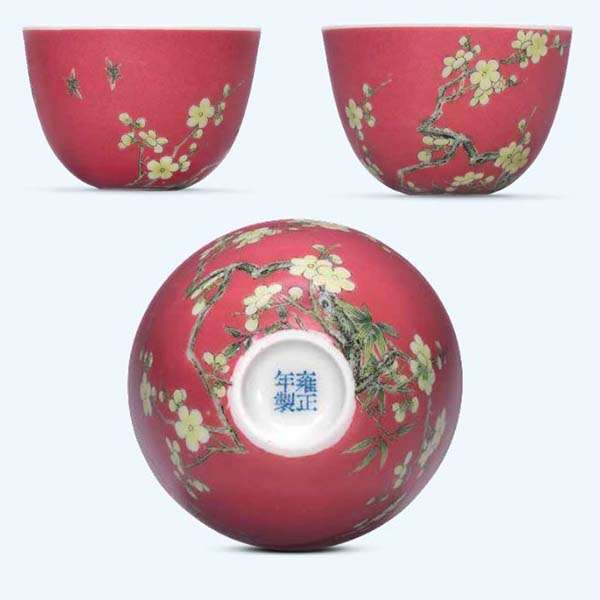
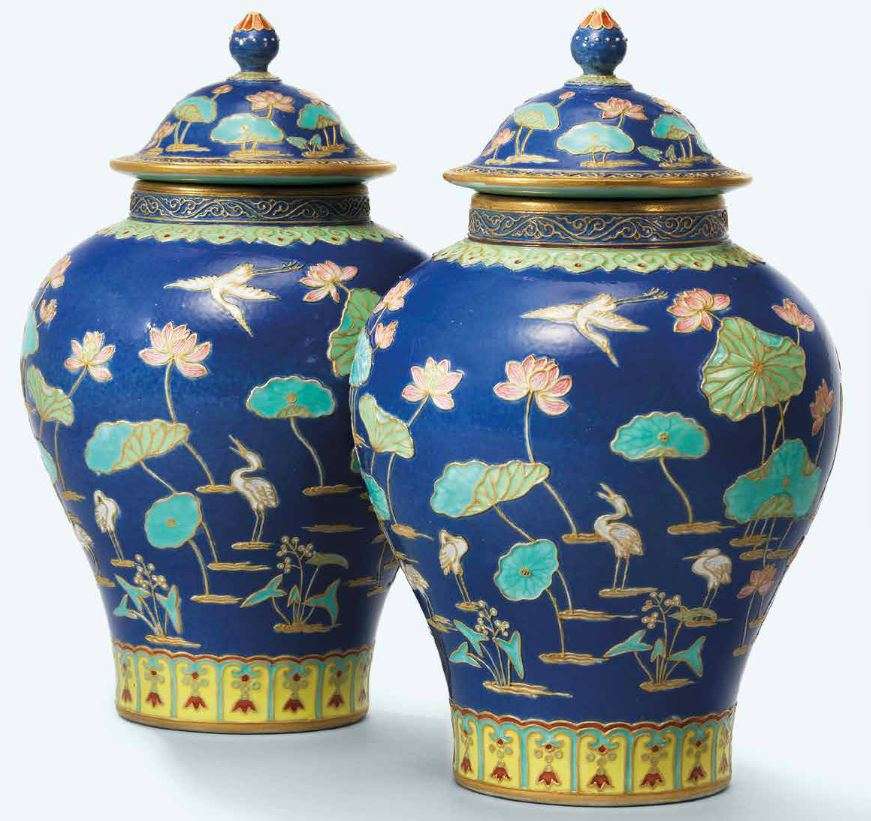
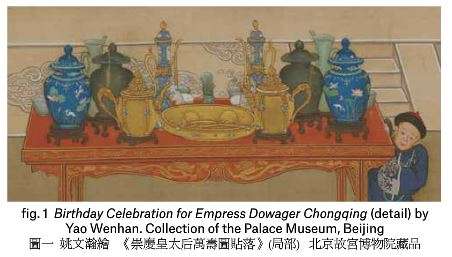
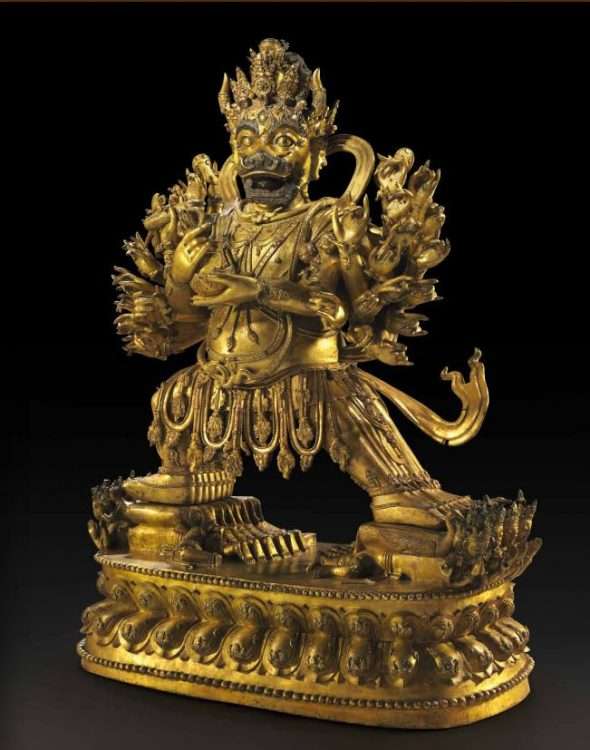




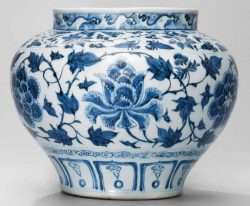

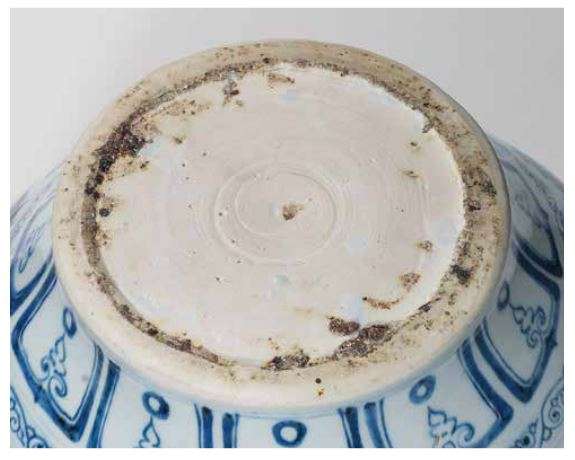
Leave a Reply